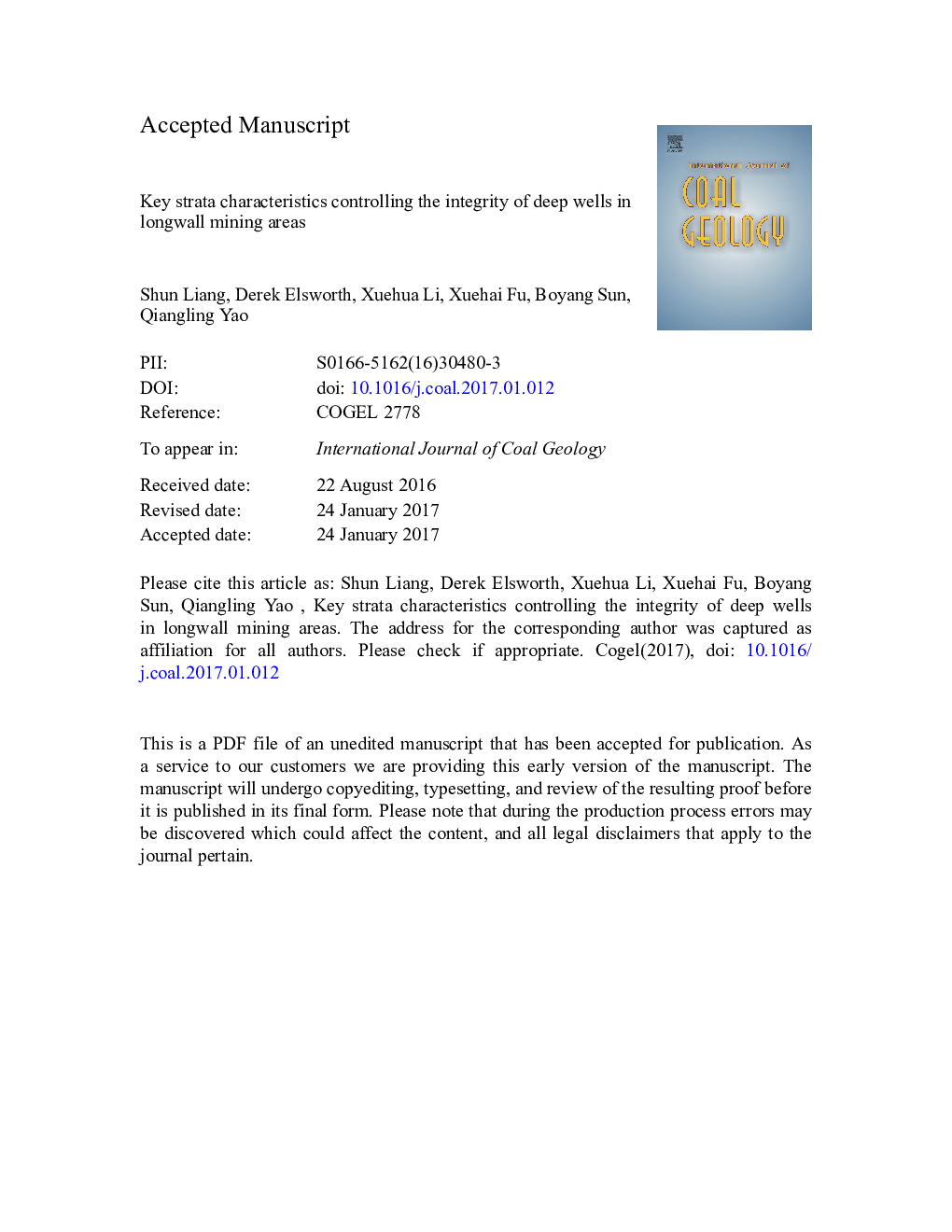| Article ID | Journal | Published Year | Pages | File Type |
|---|---|---|---|---|
| 5483750 | International Journal of Coal Geology | 2017 | 28 Pages |
Abstract
The damage of vertical oil/gas wells in longwall mining areas is mainly a result of strata movement induced by coal extraction. Strata with contrasting lithology vary dramatically in their movement and potential for well damage, with some special combinations of strata in particular having the greatest potential for damage. This study investigates the effects of specific combinations of strata transition structures ((i) topsoil-bedrock, (ii) a thin weak interlayer sandwiched above and below by two stiff beds, and (iii) the key-stratum sandwiched above and below by two soft beds) on the magnitude, severity and distribution of various anticipated well deformations, and explores the optimal drilling path for wells to maximize well integrity. Results indicate that: (1) Effects of various combinations of strata on well deformation lie essentially in the mismatch in the mechanical properties of the strata and weak interfaces, with the stratum thickness and vertical distance from the coal seam to the stratum/interface also exerting a significant influence. (2) Wells in the upper part of the topsoil are subject to horizontal tension, while the lower part is laterally compressed following the extraction of either one panel or both panels. Large lateral tensile strains normally arise at the upper part of the hard strata which directly underlie the soft strata. Large lateral compressive strains are concentrated in the strata within ~Â 5Â m above and below the coal seam and peak in the seam. Longitudinal well deformation is dominated by compression in soft strata, especially in the upper part of the layer, and is dominated by tension in stiff strata, within the lower portion in particular. Vertical compression at the interface is larger below the key-stratum, and peaks at the interface between the coal seam and its immediate roof. Well distortions in soft strata are 3 to 5 times those of ones in stiff strata. (3) Well deformations developing both at interfaces and within layers significantly intensify in the vicinity of the seam. An integrated consideration of various deformations of five candidate well paths indicates that the optimal position for well stability is the one that deviates from the pillar centerline and is close to the second mined panel.
Related Topics
Physical Sciences and Engineering
Earth and Planetary Sciences
Economic Geology
Authors
Shun Liang, Derek Elsworth, Xuehua Li, Xuehai Fu, Boyang Sun, Qiangling Yao,
